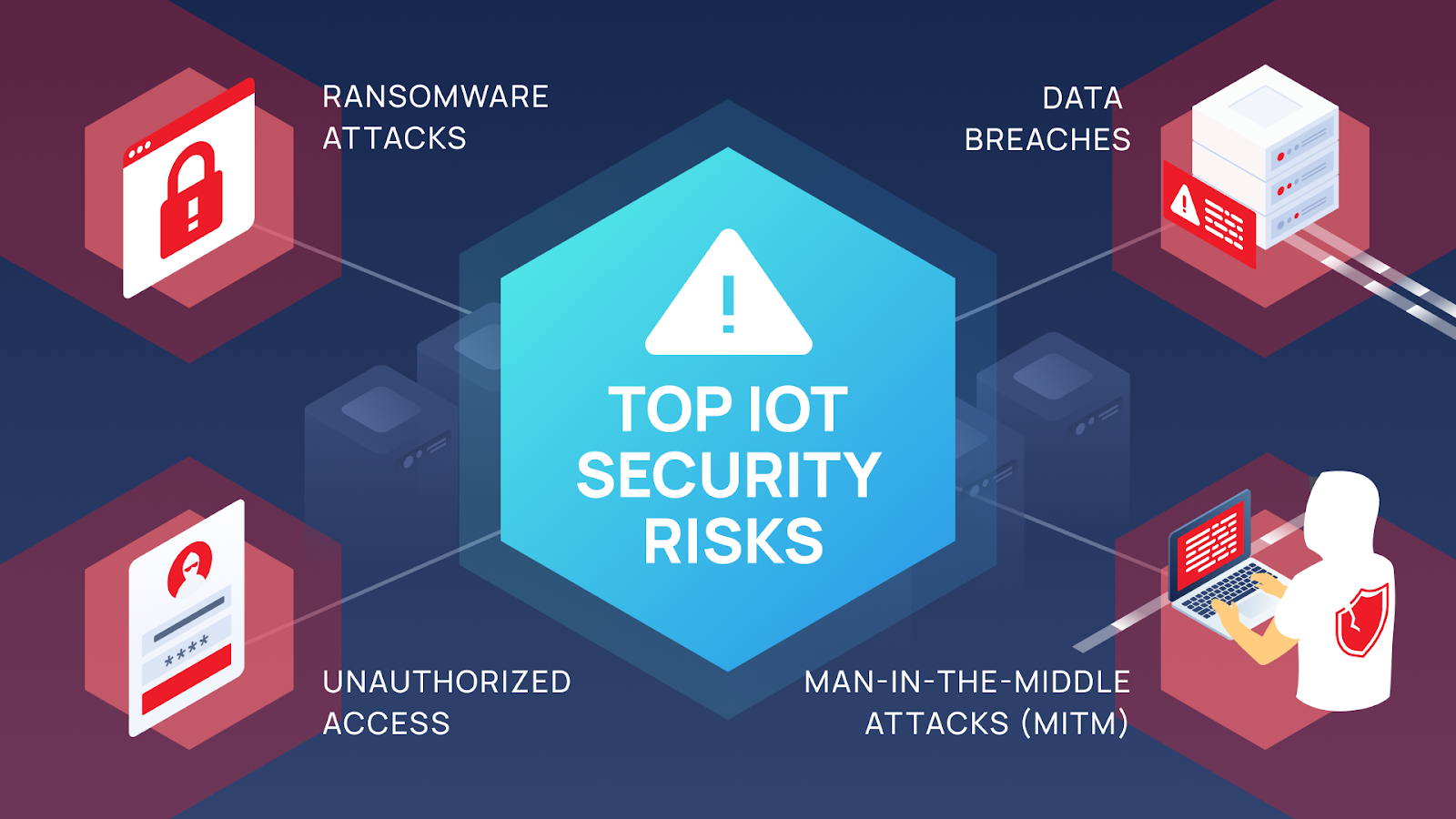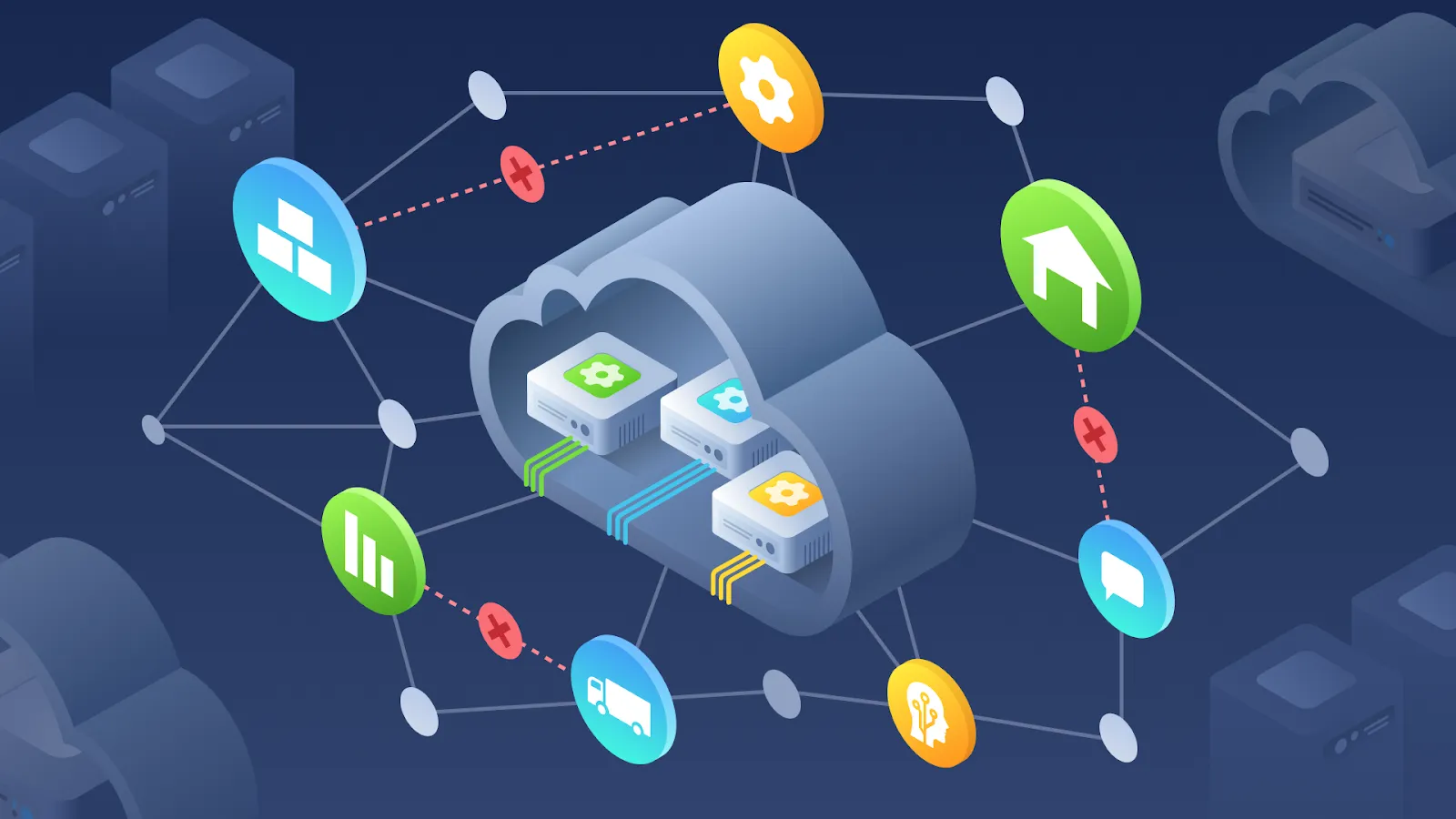IoT (Internet of Things) has disrupted industries with its advanced connectivity and data-driven insights. However, with great success comes great challenges. In this blog, we’ll explore the top challenges of IoT implementation and how addressing these barriers can unlock its transformative potential.
Lack of Standardization in IoT Ecosystems
IoT systems bring together various devices, platforms, and communication protocols. However, with the lack of universally accepted standards, businesses often deal with incompatible technologies that require custom solutions to function effectively.
Companies may find themselves tied to a single provider to ensure compatibility, which may not solve all of their needs. If they invest in new solutions, they can face significant costs.
The impact this can have in manufacturing and supply chains is significant. Miscommunication between IoT devices can lead to production slowdowns. Real-time inventory tracking and demand forecasting are unreliable without seamless data flow. Inconsistent data formats and communication gaps hinder logistics and the ability to respond quickly to disruptions.
The Path Forward
Efforts to develop industry-wide IoT standards are underway, such as the introduction of open protocols and collaborative frameworks. These solutions aim ensure IoT systems operate cohesively regardless of the vendor.
For a deeper dive into IoT device communication challenges, read this blog post.
Security and Privacy Concerns
IoT systems are prime targets for cyberattacks due to the sensitive data they collect and transmit. Breaches can disrupt manufacturing workflows, compromise supply chain integrity, and damage trust with partners and customers.

Key Security Challenges:
- Data Breaches: Access of sensitive production or supply chain information.
- Unauthorized Access: Attackers can control devices or systems, often due to weak authentication practices.
- Man-in-the-Middle Attacks (MITM): Interception and manipulation of data in transit.
- Ransomware: Hackers lock critical systems until a ransom is paid.
Addressing the Challenge
The interconnected nature of IoT means a breach in one device can ripple across the entire system. Businesses can reduce risks by implementing robust encryption, multi-factor authentication, and proactive monitoring. For more insights into IoT challenges, explore our in-depth blog.
High Implementation Costs
IoT projects often involve significant upfront investment in hardware, software, infrastructure, and training. Additionally, ongoing costs for maintenance and upgrades can strain budgets, especially for small and medium-sized businesses. Many organizations struggle to justify these expenses without seeing immediate returns, which can stall adoption.

IoT projects often involve significant upfront investment in hardware, software, infrastructure, and training. Additionally, ongoing costs for maintenance and upgrades can strain budgets, especially for small and medium-sized businesses. Many organizations struggle to justify these expenses without seeing immediate returns, which can stall adoption.
Key Cost Challenges:
- Hardware and Sensors: High-quality IoT devices, sensors, and actuators are costly, and businesses need many to cover production lines or supply chains effectively.
- Infrastructure Upgrades: IoT systems often require robust networking capabilities, such as 5G or edge computing, which may necessitate additional investments.
- Specialized Talent Costs: Hiring or training experts in IoT technologies and analytics further increases expenses.
Impact on Manufacturing and Supply Chain
Businesses that are hesitant to allocate resources to IoT may miss opportunities to enhance efficiency and competitiveness, fall behind competitors, and/or find themselves unable to reap these long-term benefits.
Limited Expertise and Talent
The complexity of IoT systems demands specialized skills in hardware configuration, software development, data analytics, and cybersecurity. However, the demand for IoT professionals has outpaced the availability of qualified talent.
Key Talent Challenges:
- Skill Gaps: Many organizations lack in-house expertise, requiring external consultants or new hires, which can be costly.
- Learning Curve: Even existing IT teams may face a steep learning curve to adapt to the intricacies of IoT systems and technologies.
- Dependence on Vendors: A lack of internal expertise can result in overreliance on third-party providers, limiting control over IoT deployments.
Impact on Manufacturing and Supply Chain
Without the right talent, businesses may take longer to deploy IoT systems or face implementation errors, fail to keep up with maintenance and optimization due to lack of knowledge, or waste resources due to operational inefficiencies.
For real-world examples of IoT’s transformative impact, read our blog on IoT use cases in construction.
Scalability Challenges
While many IoT projects start as pilot programs, scaling them across multiple facilities, supply chains, or operations can present unique challenges. As IoT deployments grow, the complexity of managing devices, networks, and data storage increases significantly.
Key Scalability Challenges:
- Network Bandwidth: Larger IoT systems require robust and scalable networks to handle the increasing volume of data.
- Device Compatibility: As new devices are added, ensuring compatibility with existing systems becomes more difficult.
- Data Management: Expanding IoT systems generate massive amounts of data, which requires scalable storage and analysis solutions.
Impact on Manufacturing and Supply Chain
Poor planning can lead to system downtime during expansions and disruption of operations. Businesses may find it challenging to adapt IoT solutions to new facilities, partners, or logistics networks, reducing overall agility. Scaling improperly configured systems often results in unexpected expenses for retrofitting or reconfiguring devices.
Driving IoT Success with AgileVision
While these challenges may seem daunting, they are not insurmountable. AgileVision specializes in reducing IoT barriers for manufacturing and supply chain businesses. Our solutions address communication inefficiencies, strengthen security, and optimize systems for scalability—all while being cost-effective and easy to integrate. With AgileVision as your IoT partner, you can unlock the full potential of IoT.
Ready to take the next step? Contact AgileVision today to explore how we can help you overcome IoT challenges and achieve success.



